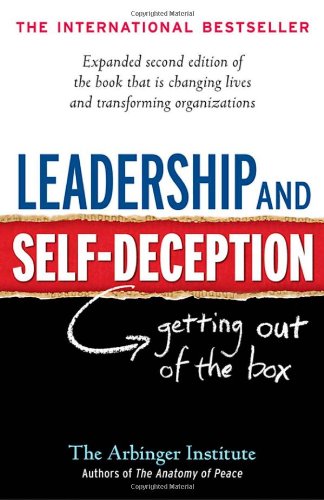 This past year was my first year leading from the first chair in our organization at Grace Community Church. I could never have imagined what a joy and what a struggle it would be to lead as one of our lead pastors. Along the journey in the middle of a difficult season I was told I should read Leadership and Self-Deception by The Arbinger Institute. I read the book on the plane heading to a conference and it wrecked my leadership world from the inside out. I have never read a leadership book and been quite so convicted about my own selfishness as a leader and the self-deception that I lived in to justify my feelings toward the people around me. I had this book for four months before I read it and I avoided it because of it’s title. Who wants to read about that? I can honestly say that God used this book to guide me back on track as one of the point leaders in our organization.
This past year was my first year leading from the first chair in our organization at Grace Community Church. I could never have imagined what a joy and what a struggle it would be to lead as one of our lead pastors. Along the journey in the middle of a difficult season I was told I should read Leadership and Self-Deception by The Arbinger Institute. I read the book on the plane heading to a conference and it wrecked my leadership world from the inside out. I have never read a leadership book and been quite so convicted about my own selfishness as a leader and the self-deception that I lived in to justify my feelings toward the people around me. I had this book for four months before I read it and I avoided it because of it’s title. Who wants to read about that? I can honestly say that God used this book to guide me back on track as one of the point leaders in our organization.
I was so challenged by this book that our entire staff team is working through it together. The response so far has been amazing as the book has challenged leaders on our staff at every level. I hope you will get the book but I also wanted to share a few of my highlights from the book for you to chew on as a leader. Check these out…
- There is no solution to the problem of lack of commitment, for example, without a solution to the bigger problem — the problem that I can’t see that I’m not committed.
- Identify someone with a problem, and you’ll be identifying someone who resists the suggestion that he has one. That’s self-deception — the inability to see that one has a problem.
- No matter what we’re doing on the outside, people respond primarily to how we’re feeling about them on the inside.
- One way, I experience myself as a person among people. The other way, I experience myself as the person among objects.
- There’s something deeper than behavior that determines our influence on others—it’s whether we’re in or out of the box.
- Self-betrayal is the germ that creates the disease of self-deception. And, like child-bed fever, self-deception has many different symptoms — from lack of motivation and commitment to stress and communication problems. Organizations die, or are severely crippled, by those symptoms. And that happens because those who carry the germ don’t know they’re carrying it.
- Helpful skills and techniques aren’t very helpful if they’re done in the box. They just provide people with more-sophisticated ways to blame.
- We need to honor them as people. And in that moment—the moment I see another as a person, with needs, hopes, and worries as real and legitimate as my own—I am out of the box toward him. What remains for me, then, is the question of whether I am going to stay out.
- When we blame, we blame because of ourselves, not because of others.
- The lesson, then, is that you need to be a different kind of leader. That’s your obligation as a leader. When you’re in the box, people follow you, if at all, only through force or threat of force. But that’s not leadership. That’s coercion. The leaders that people choose to follow are the leaders who are out of the box.
These are just my favorite highlights! Go and buy the book today! Every new hire on our team at Grace Community Church will work through this book as they arrive.
